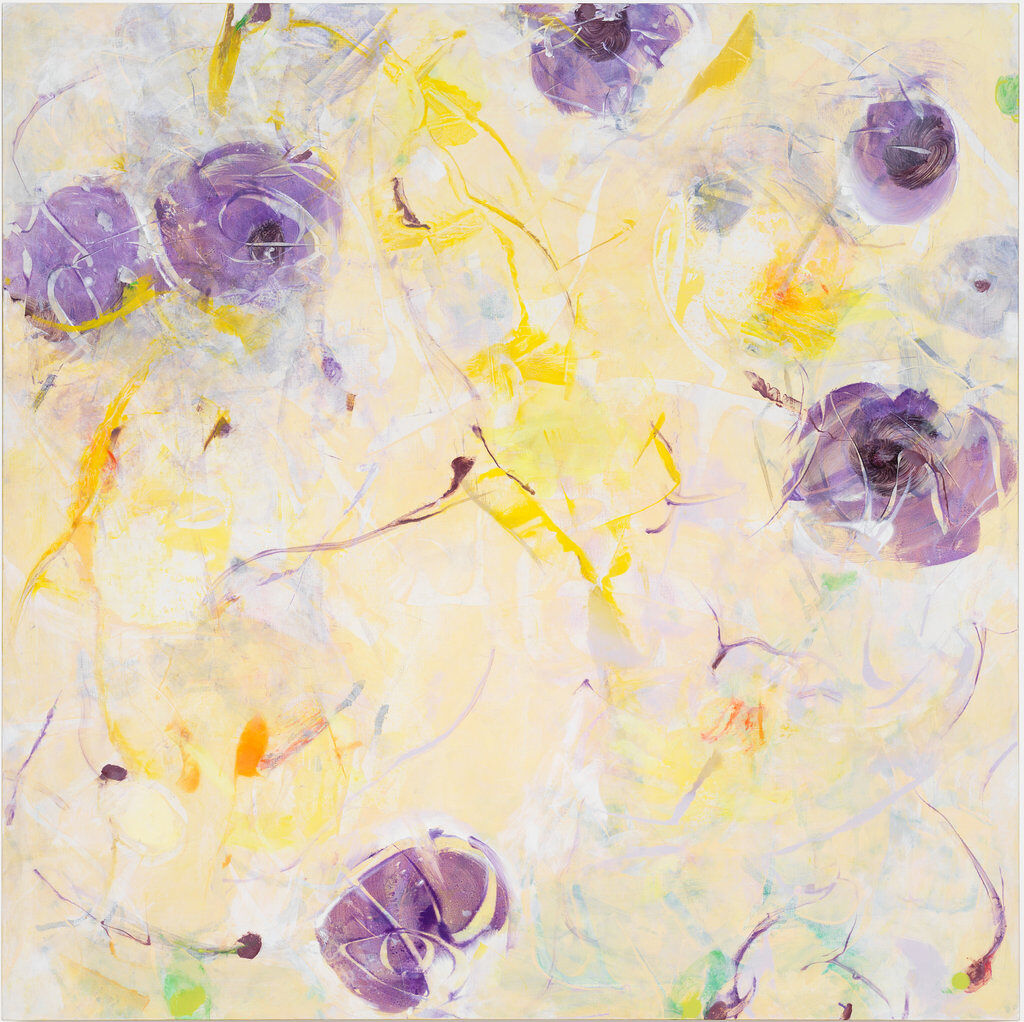With a sensitive gaze towards the realm of plants, Koberling lets their ever-renewing forms flow into his works. During his yearly stays in Iceland, where he has been spending his summers since 1977, Koberling immerses himself into a self-imposed state of isolation. There, nourished by close encounters with nature, he creates numerous watercolours on paper which not only serve as a pictorial aid to memory that he uses for his paintings back in his Berlin studio; they also form an independent group of works, which have been exhibited in Sweden’s Nordiska Akvarellmuseet.
Among Koberling’s most extraordinary artistic inventions are his ‘Überspannungen’ from the 1960s. With them he painted different parts of a motif in dispersion on two individual layers of stretched nettle that were later superimposed and merged into one under a third layer of plastic foil or glass.
A further important group of works, called the ‘Plattenbilder’, grew between 1999 and 2011, when Koberling concentrated primarily on working on aluminium or wooden boards. In these works, he lets watery colours merge one into another on white picture plains processed with gesso.
Since 2012, Koberling has returned to using oil paint on canvas. In his recent works, he has consolidated his compositions, which are similar to his early paintings from the 1990s, and beaming colours reflect the beauty of nature that he has experienced.
Through the decades of his artistic career, Koberling has continuously evolved and reinvented his manner of expression. He has thus been a role model for a new generation of artists, as well as influencing younger artists through his teaching at several art schools in Germany and as a professor at today’s Universität der Künste in Berlin between 1988 and 2007. Koberling was awarded the Fred Thieler Prize in 2006. He has been a member of the Berlin Academy of Arts since 2012. In 2017, Koberling’s oeuvre was honoured by Museum Küppersmühle für Moderne Kunst, Duisburg, with a retrospective exhibition.
